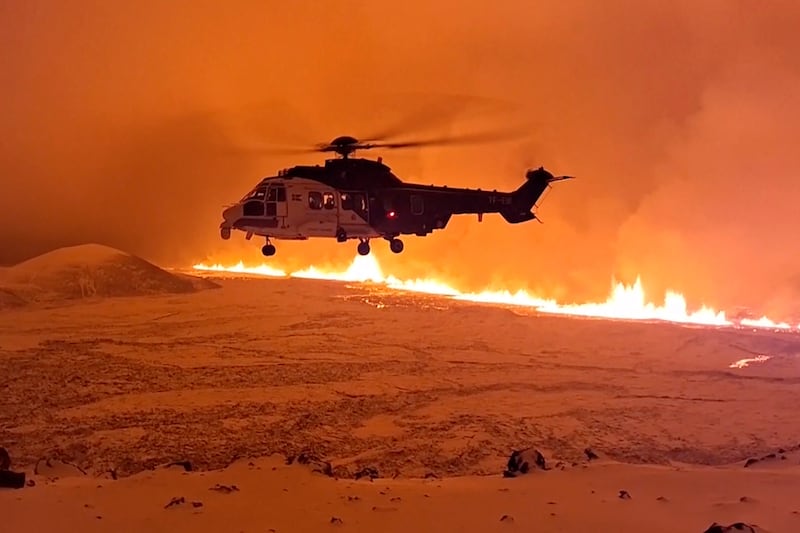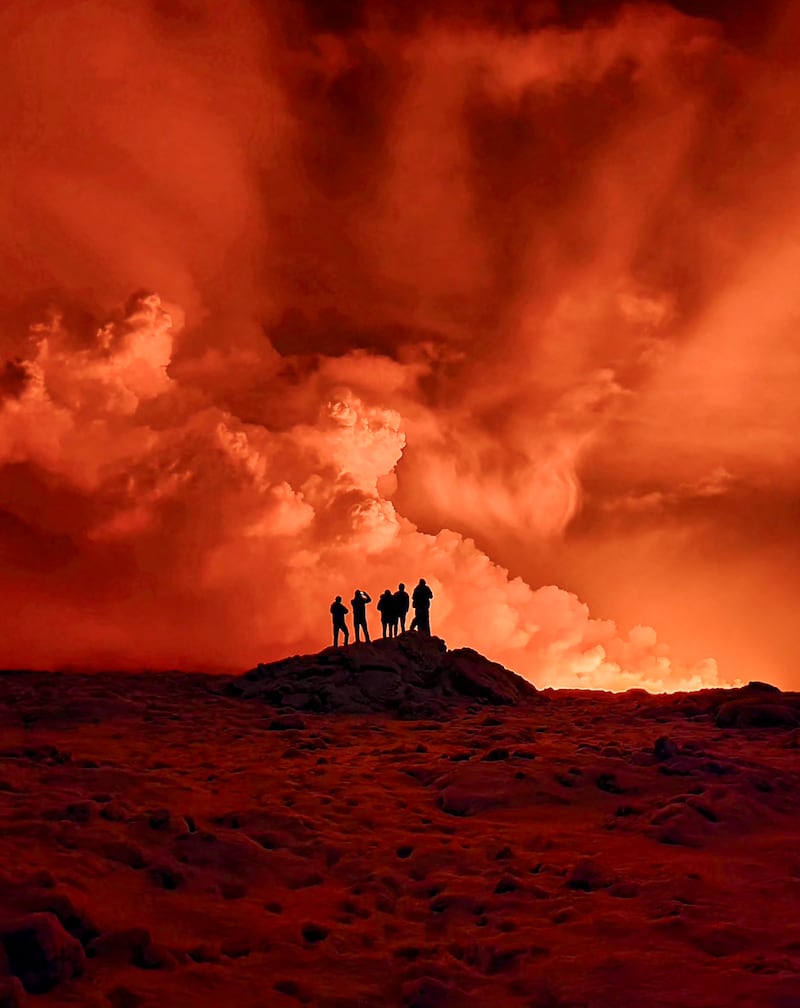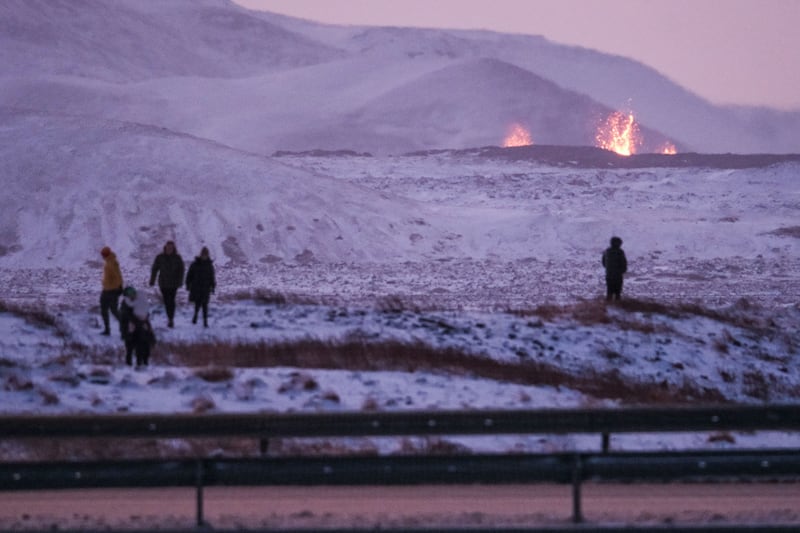Lava from a large volcanic eruption in Iceland has appeared to flow away from the only town in the area, offering hope that homes would be spared, geologists and rescue officials said on Tuesday.
The eruption, which began on Monday night, happened about 2.4 miles from the town fishing town of Grindavik, the Icelandic Meteorological Office said. The town near Iceland’s main airport was evacuated in November after thousands of earthquakes damaged homes and raised fears of an imminent eruption.
On Tuesday, fountains of orange lava shot into the darkened sky from a fissure in the ground. Iceland, which sits above a volcanic hot spot in the North Atlantic, averages an eruption every four to five years.
The eruption on the Reykjanes peninsula in southwest Iceland spewed lava and smoke more than 100 metres (330 feet) into the air after weeks of intense seismic activity.
READ MORE
“The eruption does not present a threat to life,” an Icelandic government statement said. ”There are no disruptions to flights to and from Iceland and international flight corridors remain open.”
Grainy webcam video showed the moment of the eruption as a flash of light illuminating the sky at 10.17pm local time.
As the eruption spread, magma, or semi-molten rock, could be seen spewing along the ridge of a hill.

Vidir Reynisson, head of Iceland’s civil protection and emergency management, told the Icelandic public broadcaster RUV: “The magma flow seems to be at least a hundred cubic meters per second, maybe more.
“So this would be considered a big eruption in this area at least.”
Images and live streaming of the eruption shown by Reuters and others showed bright yellow, orange and red lava in sharp contrast against the night sky.
The eruption opened a 4km fissure from which lava fountains emerged. But at its southernmost point the crack was still 3km away from Grindavik, Iceland’s Meteorological Office said.
"The eruption is taking place north of the watershed, so lava does not flow towards Grindavik," geologist Bjorn Oddson told public broadcaster RUV.



Located between the Eurasian and the North American tectonic plates, among the largest on the planet, Iceland is a seismic and volcanic hot spot because the two plates move in opposite directions.
The most disruptive in recent times was the 2010 eruption of the Eyjafjallajökull volcano, which spewed huge clouds of ash into the atmosphere and grounded flights across Europe for days because of fears ash could damage aircraft engines.
Scientists said a new eruption would likely produce lava but not an ash cloud. – Agencies










